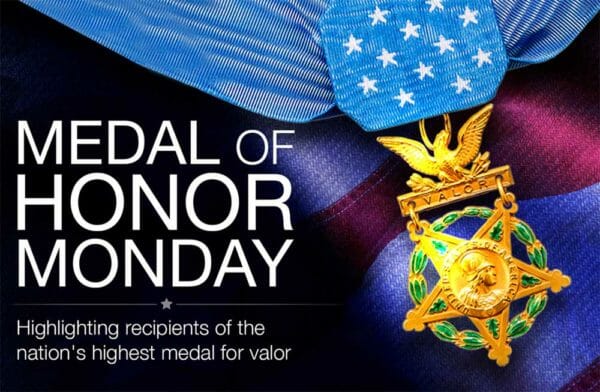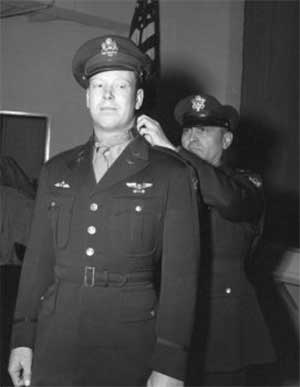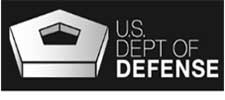By Katie Lange

USA – -(AmmoLand.com)- While there were many bombing missions over Germany during World War II, one that happened 75 years ago was so heroic that it helped to inspire the book and movie “Twelve O’Clock High,” which was later turned into a highly regarded movie.
Today, we’re honoring a man who earned his Medal of Honor during that mission: Army Air Corps 2nd Lt. John C. Morgan.
Morgan began his military career as an airman in 1941 – before the U.S. entered the war – when he joined the Royal Canadian Air Force. He would have joined the U.S. Army Air Corps, but because of an industrial accident at a job he’d previously had, he had been deemed unfit for duty for his own country.

Morgan thrived with the Canadians and was eventually transferred to the U.S. Army Air Forces’s 8th Air Force when it joined the war effort in England. He became a qualified pilot in 1943 and started flying B-17s on bombing missions. His fifth mission on July 26, 1943, didn’t go smoothly at all – but his bravery that day earned him accolades for life.
Morgan was the co-pilot of a bomber heading to Hanover, Germany, when it was attacked by several enemy fighters well before reaching their target. And it was bad.
The main pilot on Morgan’s plane had been hit in the head with a .303-caliber cannon shell that shattered the windshield. The plane’s communications system was destroyed, and the oxygen system throughout much of the plane had been knocked out, causing the plane’s waist, tail and radio gunners to lose consciousness. The top turret gunner’s arm was blown off at the shoulder.
The main pilot’s injuries left him semiconsciously scrambling to get everything under control. He fell over the steering wheel and held onto it, desperately resisting Morgan, who was trying to gain control of the struggling aircraft.
Eventually, Morgan was able to use the controls on his side to pull the airplane back to formation.
Morgan assumed the rest of his crew had bailed out – he didn’t hear their guns being fired and he had no way of talking to them – so he was forced to make an important decision alone.
“There remained the prospect of flying to and over the target and back to a friendly base wholly unassisted,” the Medal of Honor citation reads. “In the face of this desperate situation, 2nd Lt. Officer Morgan made his decision to continue the flight and protect any members of the crew who might still be in the ship. For two hours, he flew in formation with one hand at the controls and the other holding off the struggling pilot.”
Eventually, the plane’s navigator was able to make it to the cockpit and relieve Morgan of his duties of fend off the struggling pilot, who later died. They were able to get back to a friendly base and land safely, having completed a successful – albeit terrifying – mission.
For his actions, Morgan received the Medal of Honor in December 1943.
After that, he continued piloting planes until he was shot down over Germany on March 6, 1944. He remained a prisoner of war there until May 1, 1945.

Morgan was sent home after the war and spent several more years hopping between active-duty and the Reserve. He eventually retired as a lieutenant colonel and lived a full life, marrying and having a son, who also joined the Air Force.
Morgan died in 1991 at the age of 76. He was buried in Arlington National Cemetery.
Thank you for your devotion to the cause, Mr. Morgan!

U.S. Department of Defense
The Department of Defense provides the military forces needed to deter war and ensure our nation’s security. The foundational strength of the Department of Defense is the men and women who volunteer to serve our country and protect our freedoms. Visit www.defense.gov/ to learn more.
